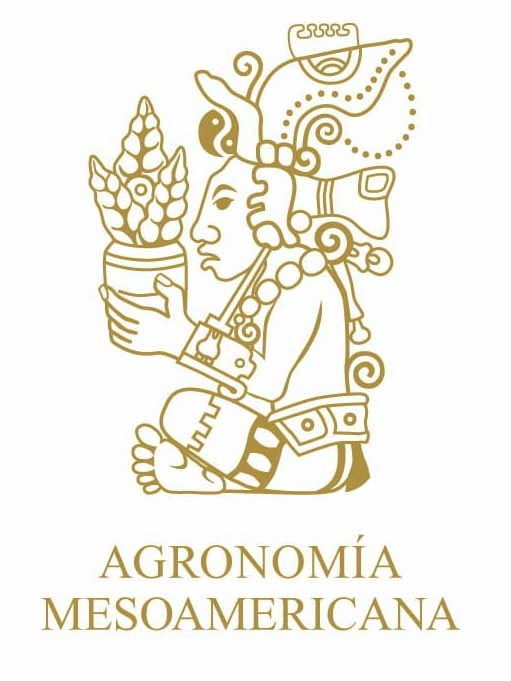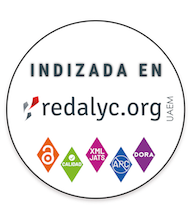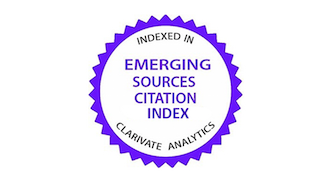Valoración económica de productos forestales no maderables del bosque seco tropical: Etnia-Pijao, Natagaima-Tolima, Colombia
DOI:
https://doi.org/10.15517/am.2025.61822Palabras clave:
Indígenas, bioeconomía, beneficio económico, sostenibilidadResumen
Introducción. Los productos forestales no maderables del bosque seco tropical (BST) ofrecen múltiples beneficios y se consideran una alternativa para el uso sostenible de los bosques y el desarrollo socioeconómico de las comunidades locales. No obstante, se conoce poco sobre su valor económico, lo que limita la visibilidad y el aprovechamiento de su potencial y funcionalidad. Objetivo. Valorar los beneficios económicos de los productos forestales no maderables del BST para la población indígena Pijao de Natagaima-Tolima, Colombia. Materiales y métodos. Este estudio se llevó a cabo en Natagaima-Tolima, Colombia, durante el primer semestre del año 2023. Se recolectaron datos mediante entrevistas semiestructuradas a 95 personas indígenas del sector rural, integrando variables sociales, etnobotánicas y económicas. Para la evaluación económica se calcularon los costos requeridos para la adquisición del producto (CRAP), el beneficio bruto (BBr) y el beneficio neto (Bn), con métodos de valoración de mercado directo, indirecto y de contingencia. Resultados. Se registraron 570 observaciones, donde se identificaron 66 especies del bosque seco tropical, las cuales ofrecen 122 PFNM, distribuidos en ocho categorías de uso (alimento, medicinal, forraje, aceite, construcción, doméstico, artesanal y mágico-religioso). A su vez, estos productos ofrecen un Bn total de $ 15000 /año, con un CRAP de $ 6409 y un Bn de $8591 /año. Las categorías de uso medicinal, alimentos y forrajes brindan los mayores beneficios económicos teniendo en cuenta que aportan el 79,5 % ($ 6830,9 /año) de los ingresos netos totales. Conclusiones. Los PFNM del bosque seco tropical aporta beneficios socio-económicos significativos en los medios de vida de la población étnica estudiada. Se consideran los PFNM más relevantes las medicinas, alimentos y forrajes.
Descargas
Citas
Acevedo-Osorio, Á., Martínez-Collazos, J., Niño Martinez, C., Garavito Morales, L. V., Salgado Arroyave, D., Gallego Aristízabal, J. H., Idarraga Quintero, Á., Sánchez Rodriguez, J. J., Torrente Castro, W., Bedoya Patiño, C. G., Cárdenas Grajales, G. I., Rey, L. E., & Moreno Sierra, V. C. (2016). La agricultura familiar en Colombia. Estudios de caso desde la multifuncionalidad y su aporte a la paz. Universidad Cooperativa de Colombia,Corporación Universitaria Minuto de Dios, Agrosolidaria. https://ediciones.ucc.edu.co/index.php/ucc/catalog/view/33/35/164
Aronson, J., Goodwin, N., Orlando, L., Eisenberg, C., & Cross, A. T. (2020). A world of possibilities: Six restoration strategies to support the United Nation’s Decade on Ecosystem Restoration. Restoration Ecology, 28(4), 730–736. https://doi.org/10.1111/rec.13170
Castrillon, F., & García, R. (2014). Investigación popular y transformación socioambiental en la región sur y centro del Tolima. Escuela Agroecológica y Territorial Manuel Quintín Lame/Grupo Semillas. https://semillas.org.co/apc-aa-files/5d99b14191c59782eab3da99d8f95126/cartilla-sur-del-tolima-escuela.pdf
Departamento Administrativo Nacional de Estadística de Colombia. (2022). Información estadística sobre economía cultural y creativa. https://www.dane.gov.co/files/investigaciones/pib/sateli_cultura/economia-naranja/8vo-reporte-economia-cultural-creativa.pdf
Departamento Administrativo de Estadística de Colombia. (2018). Censo nacional de población y vivienda 2018. https://sitios.dane.gov.co/cnpv/app/views/informacion/fichas/73483.pdf
Figueroa, J. (2005). Valoración de los productos forestales no maderables (PFNMs) en la Reserva Forestal Imataca, bajo el enfoque de la economía ecológica: Caso de estudio cuenca alta del río Botanamo, Estado de Bolívar, Venezuela. [Tesis doctoral, Universidad de la Laguna]. Repositorio Institucional Universidad de la Laguna. https://riull.ull.es/xmlui/handle/915/9850
Flórez-Vargas, N., Murcia López, M. A., Arce Castellanos, L. P., Montoya Castrillón, M., Cordero Ariza, J. J., Santamaría Bueno, A. R., Amaya Guzmán, B., Cortés Gutiérrez, C. A., Rojas Rueda, M. T., Acuña Posada, R. J., Valle Parra, J. S., & Heredia Martín, J. P. (2022). El guáimaro, una oportunidad para el Bosque Seco Tropical. Instituto de Investigación de Recursos Biológicos Alexander von Humboldt. http://repository.humboldt.org.co/handle/20.500.11761/35976
Geilfus, F. (2002). 80 herramientas de participacón comunitaria: Un diagnóstico, planificación de monitoreo y evaluación. Instituto Interamericano de Cooperación para la Agricultura.
Mendoza Hernandez, A. H., Niño Hernández, M. Á., Chaloupková, P., & Fernández-Cusimamani, E. (2021). Ethnobotanical study of the use of medicinal plants in the indigenous Pijao community in Natagaima, Colombia. Boletín Latinoamericano y del Caribe de Plantas Medicinales y Aromáticas, 20(5), 482–495. https://doi.org/10.37360/blacpma.21.20.5.35
Heubach, K., & Wittig, R., Nuppenau, E., Hahn, K. (2013). Local values, social differentiation and conservation efforts : The impact of ethnic affiliation on the valuation of NTFP-species in Northern Benin, West Africa. Human Ecology, 41, 513–533. https://doi.org/10.1007/s10745-013-9592-x
López Camacho, R., & Murcia Orjuela, G. O (2020). Productos Forestales No Maderables (PFNM) en Colombia. Universidad Distrital Francisco José de Caldas. https://www.minambiente.gov.co/wp-content/uploads/2022/03/Productos-Forestales-No-Maderables-PFNM-en-Colombia_v.pdf
Luswaga, H., & Nuppenau, E. A. (2022). Non-timber forest products income and inequality status for communities around West Usambara Mountain Forests in Tanzania. Environment, Development and Sustainability, 24(10), 11651–11675. https://doi.org/10.1007/s10668-021-01914-y.
Ministerio de Ambiente y Desarrollo Sostenible de Colombia. (2018). Guía de aplicación de la valoración económica ambiental. https://archivo.minambiente.gov.co/index.php/valoracion-economica-ambiental
Ministerio de Ambiente y Desarrollo Sostenible de Colombia. (2021). Programa Nacional para la Conservación y Restauración del Bosque Seco Tropical en Colombia: Plan de acción 2020-2030. https://archivo.minambiente.gov.co/images/BosquesBiodiversidadyServiciosEcosistemicos/pdf/Zonas-secas/programa_bosque_seco_tropical_en_colombia.pdf
Ministerio de Salud y Protección Social de Colombia. (2019). Informe final de la implementación del Plan Nacional de Seguridad Alimentaria y Nutricional , 2012-2019. https://www.minsalud.gov.co/sites/rid/Lists/BibliotecaDigital/RIDE/VS/PP/SSNAB/informe-final-implementacion-plan-nacional-seguridad-alimentaria-2012-2019.pdf
Musa, F. I., Sahoo, U. K., Eltahir, M. E. S., Abdel Magid, T. D., Adlan, O. E., Abdelrhman, H. A., & Abdelkarim, A. A. (2023). Contribution of non-wood forest products for household income in rural area of Sudan – A review. Journal of Agriculture and Food Research, 14, Article 100801. https://doi.org/10.1016/j.jafr.2023.100801.
Norden, N., González-M., R., Avella-M., A., Salgado Negret, B., Alcázar, C., Rodríguez-Buriticá, S., Aguilar Cano, J., Castellanos Castro, C., Calderón, J. J., Caycedo-Rosales, P., de Hermes, C., Díaz-Pulido, A., Fajardo, Z., Franke-Ante, R., García, D. H., González, M. A., Hernández-Jaramillo, A., Idárraga-Piedrahita, Á., López-Camacho, R., … García, H. (2021). Building a socio-ecological monitoring platform for the comprehensive management of tropical dry forests. Plants, People, Planet, 3(3), 238–248. https://doi.org/10.1002/ppp3.10113.
Pardo, Y. Y., Muñoz, J., & Velásquez, J. E. (2022). Economic valuation of ecosystem services in agricultural systems forests of the Colombian Amazonian piedmont. Desarrollo y Sociedad, 2022(91), 143–169. https://doi.org/10.13043/DYS.91.4
Pérez-Sánchez, D., Montes, M., Cardona-Almeida, C., Vargas-Marín, L. A., Enríquez-Acevedo, T., & Suarez, A. (2021). Keeping people in the loop: Socioeconomic valuation of dry forest ecosystem services in the Colombian Caribbean region. Journal of Arid Environments, 188, Article 104446. https://doi.org/10.1016/j.jaridenv.2021.104446
Rasmussen, L. V., Watkins, C., & Agrawal, A. (2017). Forest contributions to livelihoods in changing agriculture-forest landscapes. Forest Policy and Economics, 84, 1–8. https://doi.org/10.1016/j.forpol.2017.04.010
Riascos, J. C., Acosta, L. F, & Ortiz, M. I. (2020). Orange economy and artisanal activity in Colombia and Nariño: A brief analytical review. Revista Tendencias,21(2), 218–241. DOI: https://doi.org/10.22267/rtend.202102.148
Robinson, J. M., Gellie, N., MacCarthy, D., Mills, J. G., O’Donnell, K., & Redvers, N. (2021). Traditional ecological knowledge in restoration ecology: A call to listen deeply, to engage with, and respect Indigenous voices. Restoration Ecology, 29(4), Article e13381. https://doi.org/10.1111/rec.13381
Sarmiento Bernal, D. C., Espitia Palencia, L. P., & López Camacho, R. (2017). Caracterización de los Productos forestales no maderables del Bosque Seco Tropical asociado a las comunidades del Caribe colombiano. Revista Brasileira de Biociências, 15(4), 187–198.
Suleiman, M. S., Wasonga, V. O., Mbau, J. S., Suleiman, A., & Elhadi, Y. A. (2017). Non-timber forest products and their contribution to household income around Falgore Game Reserve in Kano, Nigeria. Ecological Processes, 6(1), 1-14. https://doi.org/10.1186/s13717-017-0090-8 INCOMPLETA
Turner, N. J., Cuerrier, A., & Joseph, L. (2022). Well grounded: Indigenous Peoples’ knowledge, ethnobiology and sustainability. People and Nature, 4(3), 627–651. https://doi.org/10.1002/pan3.10321
Wahlén, C. B. (2017). Opportunities for making the invisible visible: Towards an improved understanding of the economic contributions of NTFPs. Forest Policy and Economics, 84, 11–19. https://doi.org/10.1016/j.forpol.2017.04.006
Descargas
Publicado
Cómo citar
Número
Sección
Licencia
Derechos de autor 2025 Gloria Estefanía Pastran-Aguirre, Ciro Ortiz-Valdes, José Guillermo Velásquez-Penagos, Miguel Ángel Quimbayo-Cardona

Esta obra está bajo una licencia internacional Creative Commons Atribución-NoComercial-SinDerivadas 4.0.
1. Política propuesta para revistas de acceso abierto
Los autores/as que publiquen en esta revista aceptan las siguientes condiciones:
- Los autores/as conservan los derechos morales de autor y ceden a la revista el derecho de la primera publicación, con el trabajo registrado con la licencia de atribución, no comercial y sin obra derivada de Creative Commons, que permite a terceros utilizar lo publicado siempre que mencionen la autoría del trabajo y a la primera publicación en esta revista, no se puede hacer uso de la obra con propósitos comerciales y no se puede utilizar las publicaciones para remezclar, transformar o crear otra obra.
- Los autores/as pueden realizar otros acuerdos contractuales independientes y adicionales para la distribución no exclusiva de la versión del artículo publicado en esta revista (p. ej., incluirlo en un repositorio institucional o publicarlo en un libro) siempre que indiquen claramente que el trabajo se publicó por primera vez en esta revista.
- Se permite y recomienda a los autores/as a publicar su trabajo en Internet (por ejemplo en páginas institucionales o personales) antes y durante el proceso de revisión y publicación, ya que puede conducir a intercambios productivos y a una mayor y más rápida difusión del trabajo publicado (vea The Effect of Open Access).
























